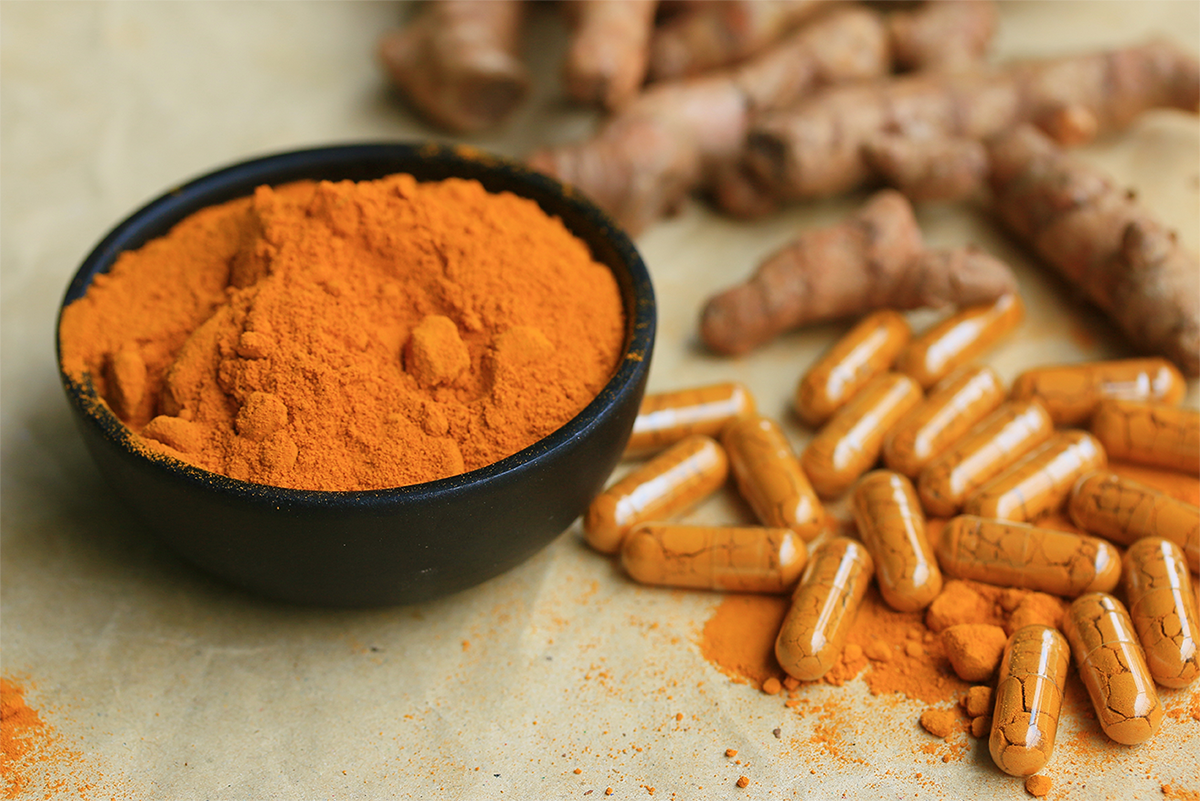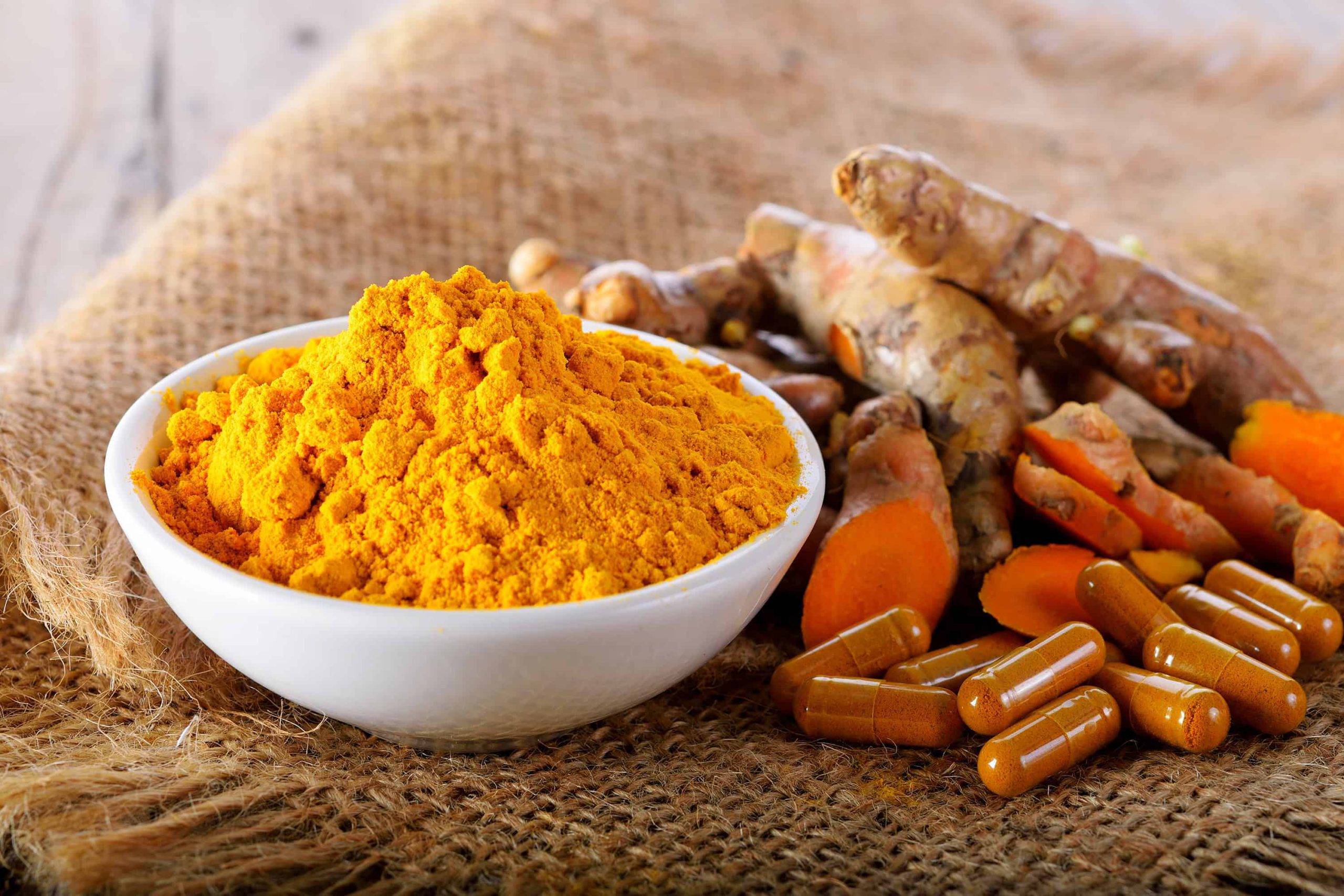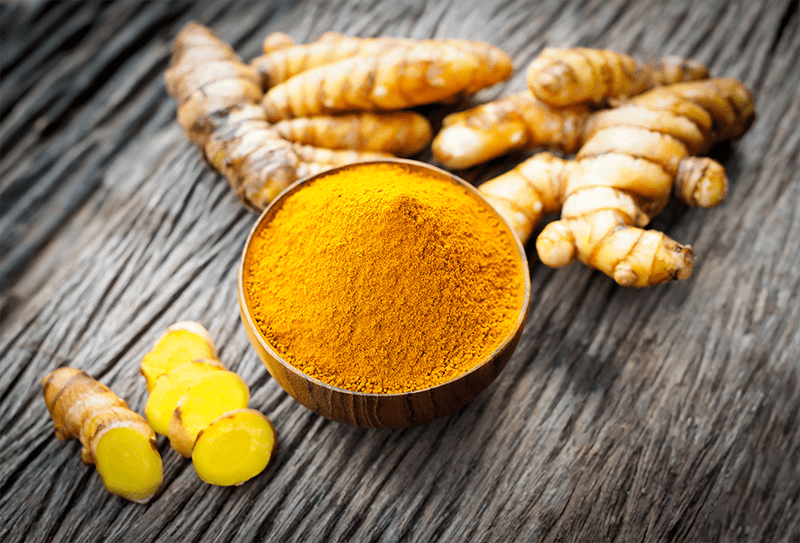
Like many of us, you may have an array of spices sitting idle in your pantry with nary a clue what to do with some of them. Or, in which foods they would best suit; turmeric is one such spice. This exotic spice, Curcuma longa, is native to Southeast Asia. It has a saturated, bright yellow hue and a pungent bitter taste. The spice itself is extracted from a root that belongs to the same family as ginger. However, this root spice is much more than just a culinary additive to enhance taste or color. It has been used for centuries in Indian ayurvedic practices. It is also being studied for its various pharmaceutical and medicinal properties.

Inflammation
The active components of turmeric, called curcuminoids, are polyphenols, which are a class of antioxidants. Antioxidants, like those in turmeric, scavenge and neutralize free radicals or unstable reactive molecules. These unstable molecules steal electrons from other substances and can damage cell membranes, tissues, and DNA.
It also decreases inflammation. Both oxidative and inflammatory damage underlie many different disease processes. In fact, both are related processes where oxidative cell damage can induce inflammation, and inflammatory cells themselves can also release pro-oxidant chemicals.
Diabetes
Type 2 diabetes and metabolic syndrome are characterized by obesity, glucose intolerance, insulin resistance, high blood sugar, high cholesterol and abnormal lipid levels. These disturbances in normal metabolism, prompts one to ensuing chronic health conditions such as heart disease, hypertension, diabetes, liver diseases (such as fatty liver disease) and atherosclerosis.
Curcumin supplementation may decrease levels of systemic inflammation and oxidation that contribute to these diseases. There is compelling yet inconsistent research suggesting that it may improve insulin resistance and lower levels of cholesterol. However, more clinical trials with controlled amounts of curcumin used, are needed to make definitive conclusions and recommendations.
Infection
There is evidence from rodent models that therapeutic levels of turmeric may help heal colitis in the large intestine. They may also help prevent the growth of H.pylori as well. Turmeric seems to have antimicrobial properties. It may be an effective mouth rinse to reduce gingival bleeding and bacteria associated with periodontitis. Due to the well documented capacity of curcumin as an antioxidant and anti-inflammatory agent, it may aid with wound healing as well.

Arthritis
Daily supplementation of 2g or more of turmeric has been shown to reduce pain, stiffness, and inflammation. Those symptoms are associated with arthritic joint pain due to the debilitating inflammation activities of this plant. In fact, research suggests that those taking turmeric had similar pain relief to that of patients treated with NSAID’s such as ibuprofen. Taking a supplement such as JointFuel360 can help you relieve pain and inflammation in arthritic conditions, as it contains turmeric among other anti-oxidative extracts and connective tissue rebuilding compounds, collagen and hyaluronic acid.
Cancer
Curcumin has been shown to increase the activation of certain detoxification enzymes that get rid of toxins and oxidants, while decreasing the activity of procarcinogenic enzymes. The antioxidants in turmeric also help to prevent cancer. They do this by decreasing the abnormal proliferation of cells and promoting cell-programmed death in abnormal cells. Furthermore, turmeric has been shown to prevent the formation of new blood vessels needed for a cancer to grow and travel to other locations.
How to use turmeric
Turmeric has a poor oral bioavailability. When you consume it normally, such as in food, a very small proportion is absorbed. Curcuminoids are fat soluble, and so turmeric must be consumed with a lipid in order to be absorbed. It has been shown that the addition of black pepper, which contains a substance called piperine, enhances absorption by 2000%! Considering this, it is advisable to add oil and pepper, or look for a supplemental formulation that contains piperine. Curcumin is generally considered safe and has little in the way of adverse side effects. It may include gastrointestinal upset at high doses. Here are some suggestions to incorporate turmeric into your diet, including:
- Golden milk: You can make this with coconut oil, a plant alternative milk, ginger, honey, cinnamon, pepper, cardamom, vanilla, and coconut cream.
- Rice: You may select any rice you prefer, though, basmati and jasmine rice are very fragrant and exotic varieties. You can add your favorite vegetables, protein like chicken or tofu, and complement it with pepper and garam masala.
- There are also numerous soups, such as in chicken soup and butternut squash soup, you can use turmeric in, which enhances color as well as its health attributes.
- Lamb tagine: This is a fragrant, decadent dish featuring tender and marinated lamb meat seasoned with a plethora of Indian spices and served on a bed of buttered rice.
- You can also add turmeric to oatmeal, egg dishes, stews, lattes, and teas or even to spice up juice or alcoholic beverages for an extra zing.

Turmeric is a staple spice for various cuisines, especially in Southeast Asia, and is known for its signature bright color. There is significant evidence that the anti-oxidative and anti-inflammatory properties of turmeric may have a supplemental role in preventing and alleviating diseases such as:
1) diabetes
2) heart disease
3) metabolic disease
4) cancer
5) arthritis
The post Turmeric is the Miracle Spice appeared first on Joint Fuel 360.